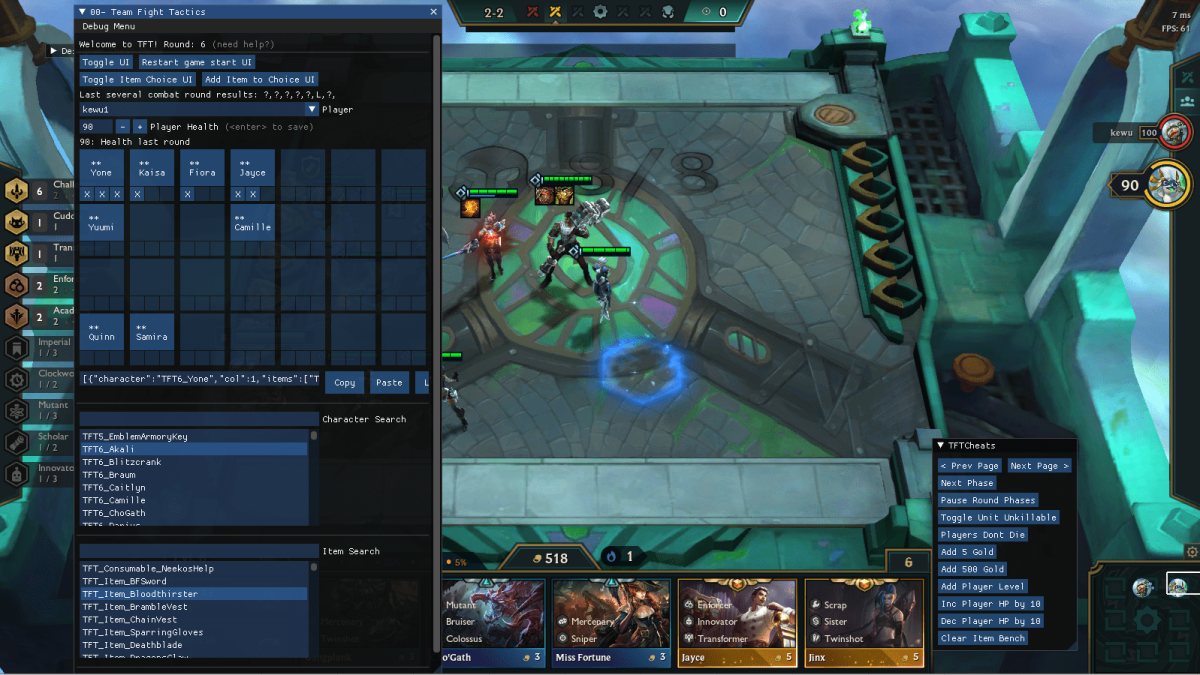At the end of a long week, game design director Stephen “Mortdog” Mortimer, wearing a black Cloud9 hoodie, loads into the first of many meetings about the next Teamfight Tactics patch, 11.24. As game designers Kent Wu and Brad Dallaire join, the three look over a list of more than a dozen high-level changes. Even though the team has three weeks to finalize the patch, this is just a fraction of what they have to work on in that time.
“Alright,” Mortdog blurts out after a deep breath. “Kent, should we start with easy stuff and get it out of the way?”
Without missing a beat, the team launches into a long series of discussions, knocking items off their list one by one. Despite the sheer amount of ground to cover, the pace is methodical and the tone lighthearted. The team talks about TFT like friends discussing their favorite game, complete with joking on the side. But after half an hour, the team comes to the last, biggest problem on their list.
“None of the Blue Buff users f***ing want Blue Buff,” Mortdog says.
Mortdog explains the problem is there aren’t any champions in Gizmos and Gadgets that can utilize the item optimally. Blue Buff is usually perfect for low-mana users, but the low-mana damage dealers in this set have prioritized damage instead of mana.
Normally low-mana utility users still want the item, but the team simply didn’t design any of those for this set. Wu suggests maybe changing a utility user into a Blue Buff user by lowering their total mana.
“Got any ideas? Because like … hell no,” Mortdog said.
“Yeah,” Wu said. “I don’t want to touch Janna, Orianna, Yuumi.”
“Right, but who’s left?” Mortdog asked. “Maybe this is a lesson for future sets to include a utility Blue Buff user.”
These kinds of issues and the discussions they spawn are part of an endless loop that repeats every two weeks or so for Mortdog, Wu and now Dallaire, who just joined the team before this cycle.
Before his arrival, Mortdog and Wu had been fully responsible for maintaining TFT’s live balance since partway through Set 5. Mortdog had previously tried distancing himself from that role to focus on his many other responsibilities, but after the team made some mistakes, he decided to dive back in.
While the duo managed from that point, Mortdog said Set 6 has required much more work to balance thanks to the inclusion of Hextech Augments on top of champions, traits and items. Another layer of complexity forces them to walk an even tighter line to keep TFT balanced, as one outlier can bring the whole patch crumbling down.
“In TFT, every piece of content is in the game at all times and throws it out of whack at all times,” Mortdog said. “Every piece of content has to be pretty well tuned.”
Katarina’s rise during the 11.23 patch in North America is a good example of this. As more people tried the team composition, the overall pool of champions that cost 2 gold thinned out. This made it easier to re-roll other two-cost champions, like Trundle or Kog’Maw.
Suddenly, the strength of one unit warped the metagame.
Discovering Problems

The live balance team always has a short window to accomplish everything required to ship a patch. They must identify problems, big and small, explore solutions, test them out, lock them in and figure out how best to explain their decisions to a player base that has diverse opinions on the game’s direction.
That is a lot to do for any sized TFT patch, but Wednesday’s Patch 11.24 is Set 6’s biggest one to date. It will also be the set’s longest-lasting patch, since the holiday season pushes the next one out by two more weeks. And, when compared to the size of last year’s holiday break patch, there are far more changes to unpack. Players will be left with the consequences of the balance team’s attempts to fix TFT’s current problems for some time.
Discovering these problems in the first place, though, is a complicated matter. Mortdog said there are three pillars to identifying problems in TFT: data, designer intent and player perception. All three have equal weight in the conversation and need to be considered. While the decision often comes to personal judgment, the odd number of factors makes it easier to tiebreak when necessary.
For data, the TFT team has access to a wide array of information, which Wu often combs through to confirm the balance team’s suspicions or identify outliers. Riot can slice the data in numerous ways. Wu takes a look at how variables like unit cost, star level, items, augments, traits and more affect round and lobby win rates.
















Published: Dec 8, 2021 05:40 pm